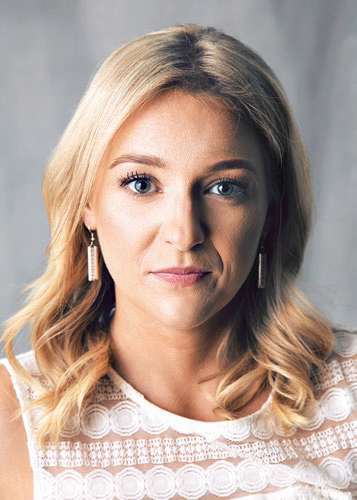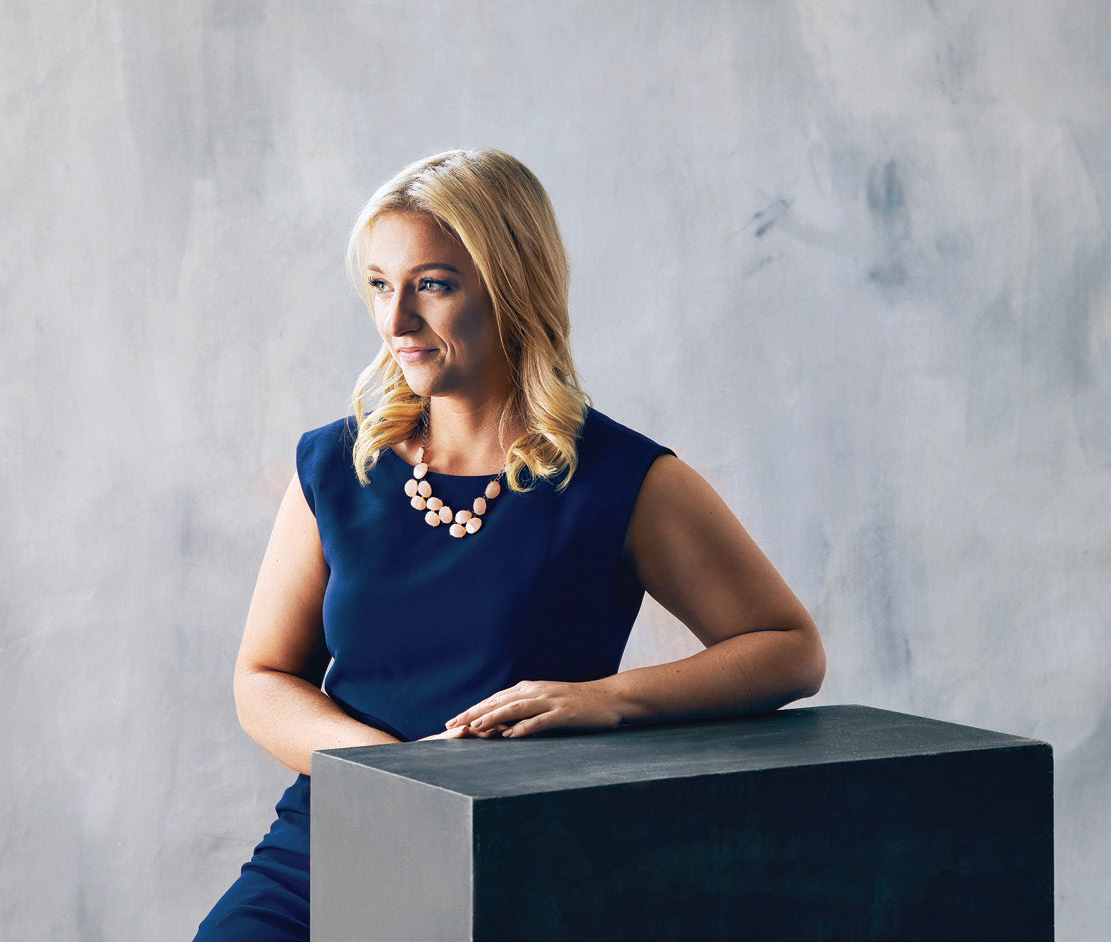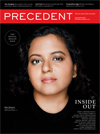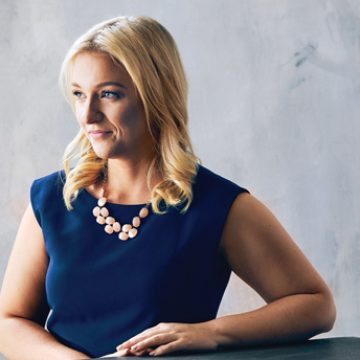Valerie Lord knows what hell looks like. She’s seen it through an airplane window. On August 2, 2005, at age 15, she returned home to Toronto from a summer exchange in Normandy aboard Air France Flight 358. Upon arrival at Pearson International Airport, the plane overshot the runway and tumbled, nose first, into a ravine.
“I had bought myself a purse in France,” recalls Lord. “It said ‘Lucky Girl’ on it, with a four-leaf clover and a strawberry.” When the plane stopped moving, after what felt like a rocky landing, Lord, thinking it was time to exit the plane, leaned over to collect her things, including the good-luck purse. That’s when her hand brushed against the window. It radiated heat, like a hot stove element. Lord then looked out the glass onto a shocking sight: the plane was now on fire.

“I always say I’m one car accident away from not being okay,” says Valerie Lord.
Pandemonium ensued. Passengers started jumping over seats to escape the cabin. Lord remembers a flight attendant shunting her through an emergency escape hatch and down an inflatable slide. She landed in a soggy ravine, scrambled over slippery rocks and ran for her life. Eventually, airport staff arrived on the scene and corralled everyone onto a Greyhound bus.
Meanwhile, her parents were at the airport, enjoying a drink at the Sheraton Gateway Hotel, when people started pointing at the TV. They looked up to see a burning plane with the red-and-blue Air France logo on its tail. Lord’s father, Claude, thought, How many Air France flights would land at this exact time? That’s Valerie’s plane.
All 297 passengers and 12 crew members survived, in what’s now known as the Toronto Miracle. Unlike some passengers — who had to jump from the burning aircraft when several landing slides failed to inflate — Lord didn’t sustain any physical injuries. But the experience made her jittery about flying and driving. “I always say I’m one car accident away from not being okay,” she says. “That could put me over the edge.”
In the six years following the crash, Claude supported Lord throughout a class-action suit. He took her for psychological evaluations and corresponded with Will Davidson LLP, the Toronto firm that took the case and, by 2011, helped secure a $13.5 million settlement for survivors.
Lord followed the case closely. It seemed to her that the lawyers were after more than monetary damages. “They were asking, ‘What went wrong?’” she says. “‘How can we stop this from happening to other people?’” (In the end, Air France was implicated for landing too close to the end of the runway at too high a speed, and so were Airbus and Goodrich for outfitting the plane with defective evacuation gear.)
The experience inspired her to attend law school. In 2015, after she completed her law degree at the University of Ottawa, Lord articled at Will Davidson and worked alongside Paul Miller, a co-lead counsel on the Air France case — her lawyer, in other words. When, in early 2017, Miller moved to Howie, Sacks & Henry LLP, Lord went with him, joining his four-person team.
Lord passionately defends personal-injury law. While the industry has seen some high-profile scandals — the Law Society of Ontario is currently drafting rules to clamp down on exploitative contingency fees — Lord argues that personal-injury lawyers are under-recognized for their contributions to social justice.
Miller’s practice focuses on defective medical technologies and pharmaceuticals. In certain cases, he’s adopted the U.S. “mass tort” model, whereby multiple cases with a common defendant are run simultaneously. For instance, with Lord’s help, Miller has negotiated more than 200 settlements against several medical companies for distributing a surgical mesh that was meant to treat vaginal prolapse but allegedly caused sexual dysfunction and nerve pain.
“These organizations have huge power. They’re putting things in people’s bodies,” says Lord. “They’re not making T-shirts.” Her goal is to enforce accountability commensurate with the risks med-tech companies assume — and the profit margins they enjoy. “There are baseline standards in our society. When you don’t adhere to them, there have to be consequences.”
Miller describes Lord as an effective litigator who has a strong rapport with clients. “She’s smart, aggressive and not afraid to go to court,” he says. “But she’s very personable with people who’ve been injured.”
Today, she can’t decide if the Air France crash was a blessing or a curse. It structured her worldview and set her on a career path. It’s also difficult to imagine a version of herself without this experience. She still owns the purse with the four-leaf clover. “If I ever get a tattoo,” she says, “I know what it’ll be.”

Valerie Lord
Associate, Howie, Sacks & Henry LLP
Year of call: 2016
Timeline of a personal-injury lawyer
2005: At age 15, Lord is on Air France Flight 358, which crashes at Pearson International Airport. Everyone on board survives.
2008: Lord, who is bilingual thanks to an early childhood in Trois-Rivières, pursues a French-studies degree at Lakehead University.
2011: The Ontario Superior Court of Justice approves a $13.5-million settlement against Air France, Airbus, Goodrich and the Greater Toronto Airport Authority. Lord is one of 184 passengers to receive a portion of the settlement.
2012: Lord starts law school at the University of Ottawa.
2015: Lord completes an internship at the Ministry of the Attorney General — “That’s when I knew for sure I would be a litigator” — and then articles at Will Davidson LLP alongside Paul Miller, a partner who worked on the Air France case.
2017: Miller leaves Will Davidson to work at Howie, Sacks & Henry LLP. Lord joins his team and helps launch litigation against manufacturers of defective hernia meshes.
 This story is from our Spring 2018 Issue.
This story is from our Spring 2018 Issue.
Photography by Nick Wong


